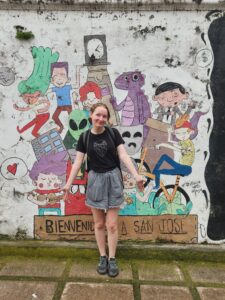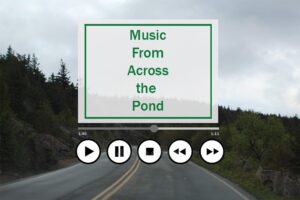My little brother, Jonah, is in a cab on the way to the Madrid airport after spending a week bouncing around the south of Spain with me. I met him in Madrid last Monday and after spending a day and half in the capital we hopped on a bus down to Granada to get away from the crowds of three million people in Madrid and explore the Moorish history of that area.
We spent our first day in Madrid trying to figure out how to find out what we wanted out of the trip. It feels like a big city and we had a tough time finding the cultural niches we wanted. We covered a majority of the city, walking almost 12 miles, and found that Madrid is unreasonably expensive. A small lunch of sandwiches and coffee cost us 25 euros and all the attractions were far out of reach for a couple tourists on a budget. The one affordable cultural experience we did find was the Chocolatería San Ginés. We paid 8 euros for a pile of churros and two mugs of the thickest and richest hot chocolate I’ve ever had. We sat in the square and tried to enjoy being serenaded by a collection of guitar players aggressively asking for tips.
The five hour bus trip to Granada was much less dreadful than I expected. Once out of the wasteland surrounding Madrid, the landscape swoops up into rolling hills covered in olive trees. We drove through the Sierra Morena, and as we got closer to Granada the snowy peak of Mulhacen, the tallest mountain in continental Spain, became visible. Winter in southern Spain is close to my ideal climate. The air is dry and the temperature stays between 50 and 75 degrees all day. The lowlands are pleasant but an adventure into the snowy Sierras is only an hour’s drive away. We didn’t have the time or equipment to get into the mountains during this trip, but I hope to go back in June to see the natural side of the area.
Granada was the final stronghold of the Moors in the 15th century and still retains much of the art and architecture. It’s shockingly beautiful and still feels like it was transplanted from the middle ages. Whitewashed stone bungalows cover the surrounding hills, with narrow cobblestone streets weaving their way through. The Moorish complex of the Alhambra presides over the city from its green hilltop. We tried to get in but were rejected after discovering that tickets sell out two months in advance.
On Wednesday, while exploring Granada, Jonah and I stumbled upon an Ash Wednesday procession going through the middle of town. We were not familiar with traditions surrounding Holy Week processions, and were both stunned to see what looked like a Ku Klux Klan rally taking place with people cheering vigorously from the sidewalks. In fact, Semana Santa processions have nothing to do with the KKK. Members of the Nazarenos wear robes and a tall conical hat called a capirote. The KKK took the costume and bastardized it at their inception in the United States. Even knowing that there was no relation between the groups, it was difficult not to feel unsettled watching the march.
I’m thoroughly exhausted after this week, and still feel as if I only saw the very surface of what I should have experienced. This part of the country has amazed me in how much more vibrant and rich it is than Santiago de Compostela. I feel as though I may have chosen poorly when deciding which university to attend in Spain.








